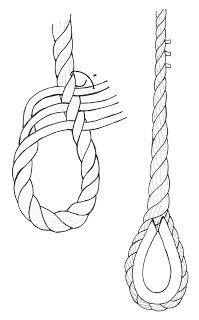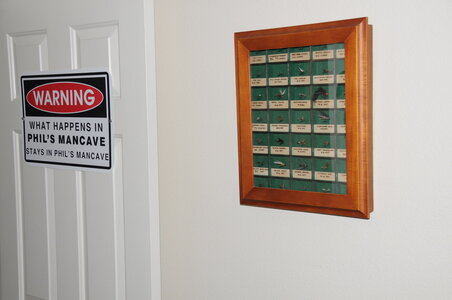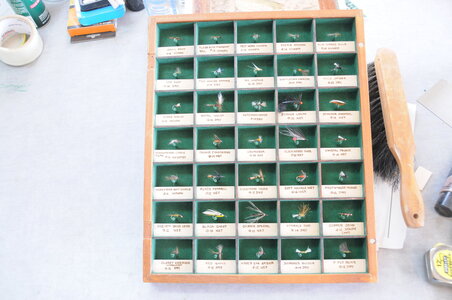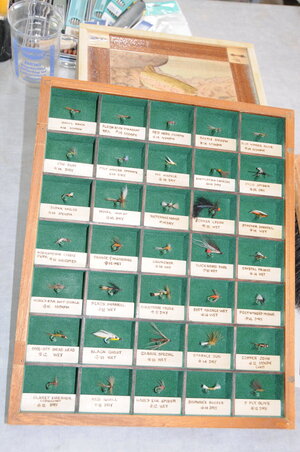I've noticed that a lot of loops are just seized rather than spliced. Are they any near as strong? They sure don't look like it.
-
LUCZORAMA SHIPWRECK SCAVENGER HUNT GIVEAWAY. 4 Weeks of Fun • 1 Legendary Prize ((OcCre’s Fram Ship)) • Global Crew Welcome!
**VIEW THREAD HERE**
You are using an out of date browser. It may not display this or other websites correctly.
You should upgrade or use an alternative browser.
You should upgrade or use an alternative browser.
Maybe a tiny drop of CA holds things together...I've noticed that a lot of loops are just seized rather than spliced. Are they any near as strong? They sure don't look like it.
They are not as strong as a splice but more than strong enough for what they are used for. They are certainly strong enough for model rigging.I've noticed that a lot of loops are just seized rather than spliced. Are they any near as strong? They sure don't look like it.
Yeah, it was oversized ships(real) I was thinking of. I remember the first time I saw one I thought, "That will never hold." and then I kept seeing them so I thought I'd better ask.
You'd be surprised how much extra friction is provided by wrapping a bight around something. Seizing for to form eyes is still used, using metal fastenings for seizing metal cable, and traditional line for seizing rope. Multiple seizes are much stronger than single ones.Yeah, it was oversized ships(real) I was thinking of. I remember the first time I saw one I thought, "That will never hold." and then I kept seeing them so I thought I'd better ask.


I can remember being in a logging camp when I was a kid and watching a guy splice an eye in a 2" diameter wire rope. He used a 1' long marlin spike and a two pound hammer in place of the needle. It was hard work even watching him.
"Real ships did not use CA glue".........you're suggesting the use of actual tar for modelling ship rigging?As one who has formal training in rescue rigging (which is quite similar to that on ships) I can confirm that Darivs has the correct answer here. Although long wraps are perhaps more frequently used than several short ones.
Also: Tar has a bonding function, which also adds to the friction coefficient.
Tar can be used at scale. Real ships did not use CA glue.
Get some 1/2" hemp rope, make a simple loop eye and seize it tightly for a foot or so with twine. Hook it over something and try to pull it loose. See for yourself.
"Real ships did not use CA glue".........you're suggesting the use of actual tar for modelling ship rigging?
Last edited:
I'll stick with CA (no pun intended.....)Absolutely! This is both scale and material appropriate. Scale rope can be tarred by thinning the tar with pine turpentine (or perhaps other solvents). If you cannot find real tar, musician's rosin (a refined pine tar) can be blackened with charcoal or candle soot.
You may need to experiment with your method. But model making contains a lot of trial and try again, does it not?
I'll stick with CA (no pun intended.....)
Last edited:
Thanks guys.
I worked at US Steel for 3 summers during college in their management trainee program, and as such, worked in all areas of the plant, including the riggers. I was surprised how steel cables could be spliced together to form loops and such, similar to that shown above but much more complex, rather than using "U-bolts" to connect them. I learned how to do it myself, finding it fascinating. Unfortunately, 55 years and poor eyes later, I find it impossible to do to a ship model.
Be careful with the CA it makes the area brittle. I prefer head cement, used by anglers who tie their own flies.Maybe a tiny drop of CA holds things together...
Last edited:
Super glue is deadly, sticks finger skin in an instant, while other surfaces seem to need holding for some time.!Thank you for keeping our little disagreements civil. Please try not to get that CA between your fingers.
I have a bottle of pine tar that I use for staining sails (diluted). I can verify that it's pretty sticky stuff and will probably harden with age. As for replacing glue with it, well, unless you are actually trying to simulate the conditions of a prisoner of war model ship builder while working on your model, I wouldn't choose it.Absolutely! This is both scale and material appropriate. Scale rope can be tarred by thinning the tar with pine turpentine (or perhaps other solvents). If you cannot find real tar, musician's rosin (a refined pine tar) can be blackened with charcoal or candle soot.
You may need to experiment with your method. But model making contains a lot of trial and try again, does it not?
I got zippers on my flies!Be careful with the CA it makes the area brittle. I prefer head cement, used by anglers who tie their own flies.
Sorry couldn't resist that one. I've been looking for an alternative to CA & diluted PVA for knots for some time now, so will try that 'head cement'.
Deadly?Super glue is deadly, sticks finger skin in an instant, while other surfaces seem to need holding for some time.!









